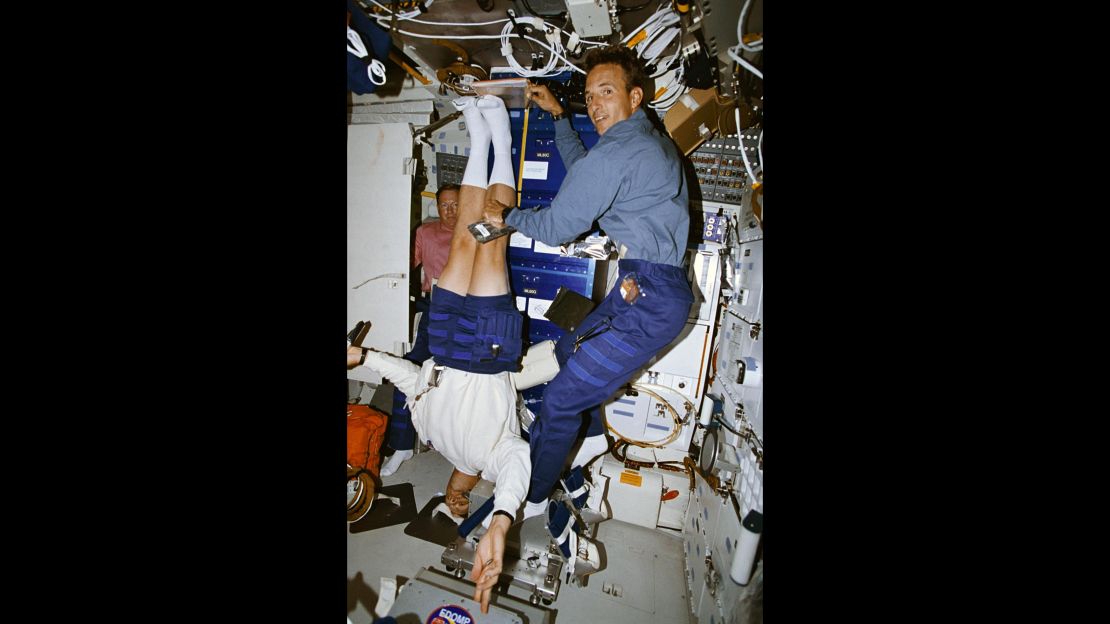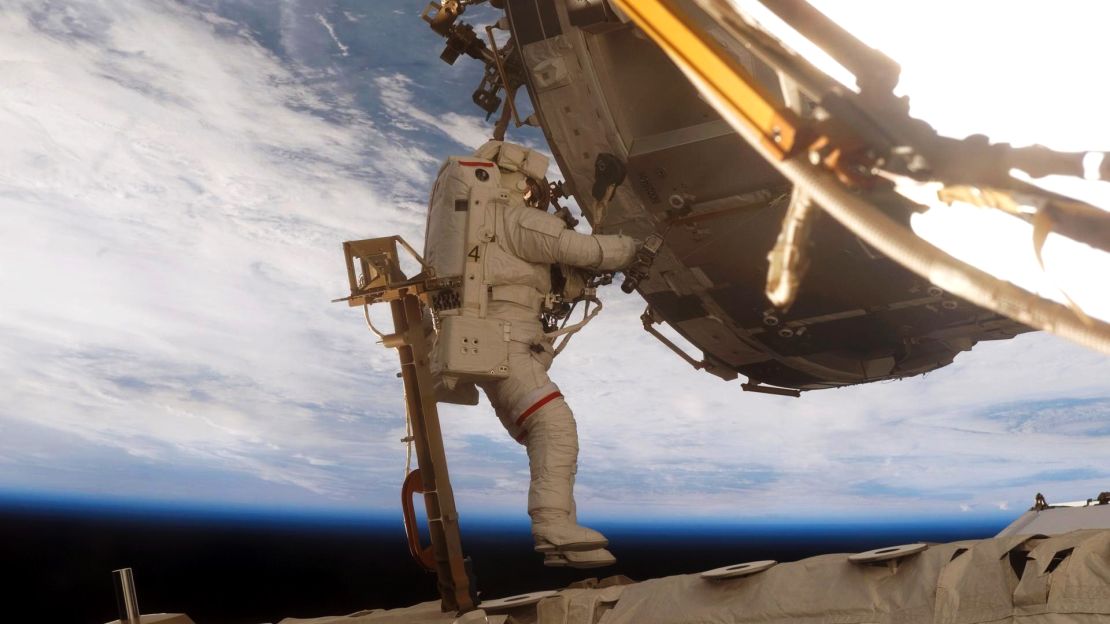Story highlights
Astronauts can briefly achieve 2 inches in top however endure muscle loss and again ache
Extra countermeasures involving train might assist mitigate ache and muscle loss
CNN
—
A six-month keep on the Worldwide House Station is usually a ache within the again for astronauts. Whereas they might achieve as much as 2 inches in top briefly, that impact is accompanied by a weakening of the muscle tissues supporting the backbone, in response to a new study.

Astronauts have been reporting again ache because the late Eighties, when house missions grew longer. Their flight medical knowledge present that greater than half of US astronauts have reported again ache, particularly of their decrease backs. As much as 28% indicated that it was reasonable to extreme ache, typically lasting the length of their mission.
Issues don’t enhance after they return to Earth’s gravity. Within the first yr after their mission, astronauts have a 4.3 instances greater threat of a herniated disc.
“It’s form of an ongoing downside that has been a big one with trigger for concern,” mentioned Dr. Douglas Chang, first creator of the brand new research and affiliate professor of orthopedic surgical procedure and chief of bodily drugs and rehabilitation service at College of California San Diego Well being. “So this research is the primary to take it from simply an epidemiological description and have a look at the doable mechanisms for what’s going on with the astronauts’ backs.”
Like being in a physique forged
A lot consideration has been centered on intervertebral discs, the spongy shock absorbers that sit between our vertebrae, because the perpetrator for the again points that astronauts face. However the brand new research runs counter to that pondering. On this analysis, funded by NASA, Chang’s staff noticed little to no adjustments within the discs, their top or swelling.
What they did observe in six astronauts who spent 4 to seven months on the ISS was an amazing degeneration and atrophying of the supporting musculature within the lumbar (decrease) backbone, Chang mentioned. These muscle tissues are those that assist us keep upright, stroll and transfer our higher extremities in an setting like Earth, whereas defending discs and ligaments from pressure or damage.
In microgravity, the torso lengthens, probably as a result of spinal unloading, through which the spinal curvature flattens. Astronauts additionally aren’t utilizing the muscle tone of their decrease backs as a result of they aren’t bending over or utilizing their decrease backs to maneuver, like on Earth, Chang mentioned. That is the place the ache and stiffening happens, very similar to if the astronauts have been in a physique forged for six months.
MRI scans earlier than and after the missions revealed that the astronauts skilled a 19% lower in these muscle tissues throughout their flight. “Even after six weeks of coaching and reconditioning right here one Earth, they’re solely getting about 68% of their losses restored,” Chang defined.
Chang and his staff think about this a severe problem for long-term manned missions, particularly when contemplating a visit to Mars that might take eight or 9 months simply to achieve the Crimson Planet. That journey, and the astronauts’ potential time spent in Martian gravity – 38% of the floor gravity on Earth – creates the potential for muscle atrophy and deconditioning.
The staff’s future analysis may even have a look at reported neck points, the place there might be much more occurrences of muscle atrophy and a slower restoration interval. They’re additionally hoping to accomplice with one other college on inflight ultrasounds of the backbone, to take a look at what occurs to astronauts whereas they’re on the house station.
As a result of no one likes again ache and muscle loss, Chang instructed countermeasures that must be added to the already two- to three-hour exercise astronauts have on the house station every day. Although their train machines deal with a spread of points together with cardiovascular and skeletal well being, the staff believes that house vacationers additionally want to incorporate a core-strenghtening program centered on the backbone.
Along with the “fetal tuck” place astronauts use in microgravity to stretch their decrease again or alleviate again ache, Chang instructed yoga. However he is aware of that’s simpler mentioned than carried out.
“Lots of yoga will depend on the results of gravity, like downward canine, the place a stretch by way of the hamstring, calf muscle tissues, again of the neck and shoulders are doable due to gravity. Once you take away that, you could not have the identical profit.”
Any machines on the house station additionally should be designed with reference to weight, measurement and even the reverberations they may produce on the station.

Chang and the opposite researchers brainstormed with a digital actuality staff about completely different train applications that will allow astronauts to ask associates, household and even Twitter followers to hitch them in a digital exercise, making the each day repetition of their exercises extra enjoyable and aggressive.
Considered one of Chang’s teammates has felt this ache personally. Dr. Scott Parazynski is the one astronaut to summit Mount Everest. He skilled a herniated disc after getting back from the ISS to Earth. Lower than a yr later, when he tried to climb Everest the primary time, he needed to be airlifted off. After a rehabilitation course of, he finally made the summit. Now, he speaks to present astronauts concerning the methods they’ll contribute to research about their well being in microgravity.
Be a part of the dialog
Holding the astronauts wholesome and match is the least they’ll do, Chang mentioned.
“When a crew comes again, they are saying on one facet of the house station, they see this lovely blue planet,” he mentioned. “All the things they maintain pricey to them is on this fragile little planet. They usually look out the opposite window and simply see infinity stretching off into the blackness, they usually come again with a special sense of themselves and their place within the universe.
“All of them are dedicated to furthering house data and making incremental steps ahead in any method they’ll for the subsequent crew.”


